The Hoods Woods website surival.com has been updated to present you with a fresh new look and new functionality for your convenience.
The page you are looking for can now be found here.
Please make sure to update your links and bookmarks with the new address because this page nor this site will be receiving any future updates. If you would like to be sure to keep up with what the Hoods are up to, you will want to take advantage of our new site.
Webmasters:
If you are reaching this page during a test of your links, please make sure to update your link with the new link found above to ensure that your visitors are getting the most current and up to date information.
|
|

|
Vigilant Always
|

|
|
The ASA
Turkey:
Tuslog Det 4
I was lucky enough to catch the weekly mail plane to Det 4. As we flew toward the PSP and dirt landing strip I snapped this photo. In the foreground is the little town of Sinop Turkey. The water is the Black Sea. At the time I was there about 5,000 people lived within 15 KM of the town. The town was established literally thousands of years ago and was ringed by the falling walls of past empires. Det 4 is visible as a white speck on top of the "Hill" in the background. We called it "The Hill". Circa March 1964
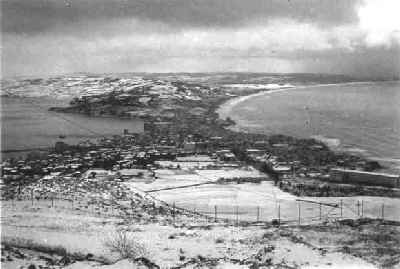 |
Some folks think that Turkey is a land of deserts and plains. Those do exist but Northern Turkey is a beautiful land. I took this picture one cold day in January. Clearly the cold winters from Russia sweep across the black sea. You can see our perimeter fence. We worked on a daily basis with Turkish Askari who, though they didn't work our missions, kept the perimeter fairly secure. We had plenty of time to learn other things from one another as we smoked "Bafra' cigarettes, shared "Raki" and wandered. I won't even try to explain Bafra cigarettes.
There wasn't a hell of a lot to do in "town" and the nearest other town was a place called "Samsun"... almost 200 miles away by road. We chose to spend our time with the locals and try to learn more about their lifestyles and skills.
Turks can be very generous and friendly people if you try. It wasn't long before I had developed a friendly relationship with some of the local men (You DON'T talk to the women!) One of the first was the Warden of the local prison. He and I first met on the beach and we wrestled. I'd never wrestled Turkish style before but I thought my college wrestling was up to his. Big mistake! He wasted me in moments. It was like wrestling a bear. Finally, he ended up accidentally breaking my nose. The guy started to cry (I already had tears running down my face!). I shoved my face into the cold water of the Black sea. Pushed a couple of pieces of cactus core into my nose and we walked back to town. He bought dinner. That started with a bottle of Kavcaclidera (sp?) wine to ease the pain. Before long we were buds. From that point on, our part of Northern Turkey opened up for me.
I could tell stories about a guy we called "Joe" who regularly stole the batteries from our repeater station and from whom we would buy them back.
|
Vietnam
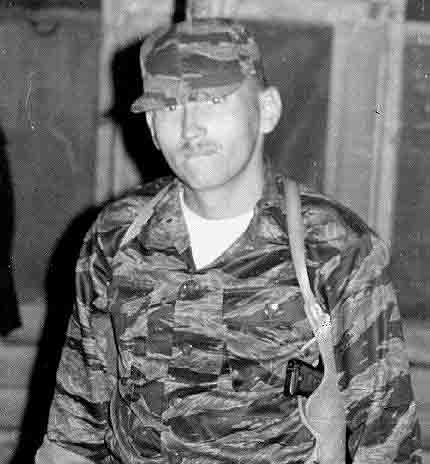
I started out in the old 3rd RRU which changed names several times during my stay in country. Basically the history of the unit reads like this
3rd Radio Research Field Station
"James T. Davis "Station
|
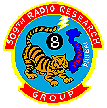
|
Organized: 20 September 1961*
Cover Designation: 3d Radio Research Unit
Assigned Command: US Army Security Agency Pacific
Supported Command: MAAG-V/MACV
Location: Saigon
Redesignation: 53d US Army Security Agency Special Operations Command (SOC) on 1 November 1964
Discontinued: 1 June 1966
Vietnam Campaign Credit: 1-3
Vietnam Honors: 2 MUCs Detachment 'J', 3d Radio Research Unit received 1 MUC; 1st Team, 3d RRU received 1 PUC; and 2d Team, 3d RRU received 1 PUC.
Command mission transferred to the 509th USASA Gp.
Thanks to http://asa.npoint.net/asa3drrfs.htm
|
|
The first thing to know is that all missions of the ASA were highly classified.
Back in '85 I felt the need to talk about my wartime experiences with a group of Vietnam Veterans at the local VA facility. I requested permission to discuss certain events as well as question the status in general of ASA missions and this was the reply from the Army Intelligence and Security Command.
Catch 22...
"... Furnish more specific information such as unclassified projects or operations titles, unclassified codeword missions, locations and timeframes, MOS involved etc......"
If I could do that I wouldn't have written the letter in the first place. If I tried to write them with what I thought might be unclassified (ALL missions of the ASA were classified) I could be arrested for disclosing classified information. The National Security Agency (NSA) clearly handles all issues related to our missions. OOPS!
I can say that I and others in the ASA were assigned to a number of units throughout Vietnam in support of field operations as "intelligence analysts" .
What the hell is an "Analyst". ASA missions included several aspects of intelligence collection. This included COMSEC (Communications Security), SIGINT (Signal Intelligence) and occasionally HUMINT (Human Intelligence). I had nothing to do with COMSEC (These guys were some times thought of as the IRS or FBI of communications within the friendly forces. Without them our casualties would have been much higher). Other than COMSEC, analysts had access to a myriad of intelligence sources. Each of the Analysts worked with a team of operators in a variety of missions. (All of this information is available on the net or in libraries) If you want more information about the ASA go to the Army Intelligence site at; http://www.fas.org/irp/agency/inscom/history.htm
The Federal Government has requested that we avoid discussing certain sites and missions. This extract from an address by the Staff Director of the Center for the study of Intelligence at the a meeting of the Society of Historians of American Foreign Relations should shed some light on the issues involved.
- "..... For example, a sitting US ambassador may object to release of 30 year old information, concerning perhaps a covert action in the country where accredited, arguing that declassification would do great damage to current diplomatic relations. There may be instances where the timing of publication of a volume is particularly unfortunate in this regard.
- • Acknowledging a long-past covert action or intelligence collection activity, and then publishing details of its implementation and objectives, might do damage to important current US interests in one or more countries. These might be diplomatic, intelligence, legal or other interests.
- • Details that could compromise still sensitive intelligence sources or methods cannot be revealed as long as doing so could reasonably be expected to endanger individuals who covertly cooperated with the US Government, or endanger their families. People in their 70s, 80s or 90s today, who may have cooperated with the United States three or four decades ago, cannot be abandoned or endangered.
- •And, of course, we are not at liberty unilaterally to declassify records that might impact on the cooperative activities of third countries."
All ASA vets have a responsibility to maintain the code of silence that we took when we entered into our work. It is not for us to choose what is or is not sensitive information. THEY have the resources and authority to imprison us.
I was just a kid but I thought I was ready. A year with the Turks give you an attitude. That's an old M3A1 Submachine gun (.45 cal). The Beanie is from an ARVN unit we were supporting just after I arrived in country. I still have it as a keepsake. No, I was not in Special Forces.
16 months later I had changed some:
In the Central Highlands (Pleiku) I had a chance to wander into town for a Ba Mui Ba (Beer 33) and friendly conversation with a couple of our daytime friends. At night they might change sides. That was one of the strangest things about the conflict. One day you are having a few beers with some locals, the next they could be trying to kill you. All of the bars featured full front chain link fencing to stop those pesky grenades.
In the early days of the conflict the M-14's were the standard battle weapon. Some folks (civilians mostly) don't know that the M-14 was capable of selective fire (full or semi automatic). Sometimes we'd step out to the perimeter and just fire off some rounds. Notice that there are several shell casings in the air. During this time I was working with (TDY) to the 403rd Special Forces (under subordinate units). One of the SF guys is visible in the background.
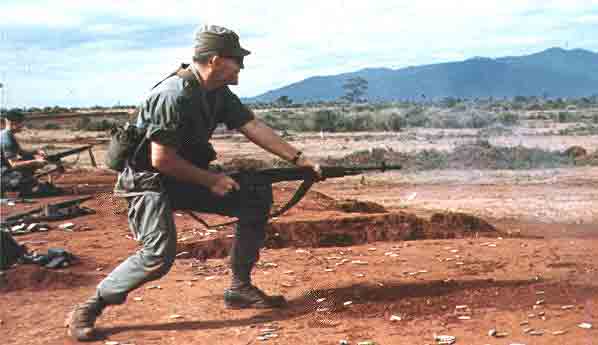
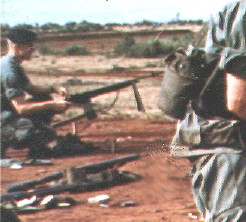
We maintained flop houses in Saigon, Cholon and Giah Dinh. This is Christmas at one of them early in my first tour. I'm the 3rd from the left in white pants.
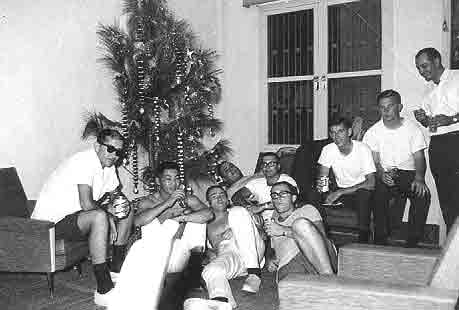
Start here for the most complete overview. Show your World Wide Badge and enter http://asa.npoint.net
If you are Ex-ASA you can join The National Army Security Agency Association
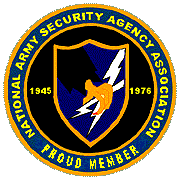
Read what the National Security Agency has to say about the ASA at http://www.nsa.gov/vigilance/vigil00005.cfm
You can learn a bit more about where the 313th ASA went and it's current active mission at....
http://www.bragg.army.mil/afvc-z/battalion_history.htm
To learn about the USASASF scroll down to the area under subordinate units.
Cool site with a few surprises. http://www.topsecretsi.com
Copyright ©1998 Hoods Woods. All rights reserved.
|